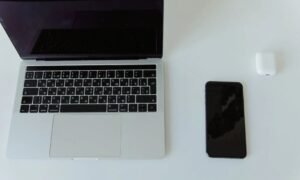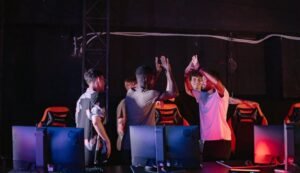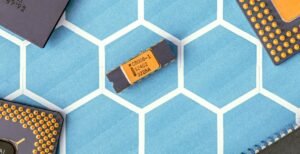Which AI Tool Can Create Images?
Artificial Intelligence (AI) has made tremendous advancements in recent years, enabling machines to perform complex tasks that were once only possible for humans. One fascinating application of AI is image creation, where algorithms are trained to generate realistic and visually appealing images. In this article, we’ll explore some of the top AI tools that can create images, revolutionizing various industries such as design, marketing, and entertainment.
Key Takeaways
- AI tools can produce high-quality images with realistic details.
- These tools offer a range of customization options to cater to different needs.
- The generated images can be used in various industries such as design, marketing, and entertainment.
1. DeepArt.io
DeepArt.io is an AI tool that utilizes deep learning algorithms to transform photographs into artistic masterpieces. This tool provides a variety of image styles to choose from, giving users the ability to create unique and visually stunning images. DeepArt.io can be used by artists, designers, and anyone looking to add a creative touch to their visuals.
2. DALL-E
Developed by OpenAI, DALL-E is an AI program designed to generate images from textual descriptions. This innovative tool uses a combination of deep learning and natural language processing to understand and depict the objects mentioned in the text. DALL-E has demonstrated remarkable capabilities in creating detailed and novel images based on specific descriptions.
3. Runway ML
Runway ML is a powerful AI tool that allows users to create images using pre-trained models, without the need for extensive technical knowledge. This tool supports various image manipulation tasks such as style transfer, object removal, and scene generation. With its user-friendly interface, Runway ML is accessible to beginners as well as professionals in the field of image creation.
| AI Tool | Image Generation Features |
|---|---|
| DeepArt.io | Artistic style transformation of photographs |
| DALL-E | Image generation based on textual descriptions |
| Runway ML | Pre-trained models for various image manipulation tasks |
With the rapid advancement of AI technology, these tools are constantly evolving and becoming more sophisticated. As a result, they are capable of producing images that are virtually indistinguishable from those created by humans. Whether you’re a designer seeking inspiration, a marketer looking for eye-catching visuals, or simply an art enthusiast exploring new possibilities, these AI tools offer immense potential and endless creative opportunities.
Applications of AI-Generated Images
- Design industry: AI-generated images can be used in graphic design, web design, and product packaging to enhance visual appeal and convey desired messages.
- Marketing: AI tools can generate customized visuals for advertising campaigns, social media, and brand representation, helping businesses stand out in a crowded marketplace.
- Entertainment industry: AI-generated images can be used in movies, video games, and virtual reality experiences to create stunning visual effects and realistic environments.
Comparison of Key Features
| AI Tool | Customization Options | Training Time |
|---|---|---|
| DeepArt.io | Wide range of artistic styles to choose from | Varies depending on image complexity and style |
| DALL-E | Unlimited possibilities based on textual input | Extensive pre-training required to achieve desired results |
| Runway ML | Various pre-trained models for specific image manipulation tasks | Depends on the complexity of the task |
In conclusion, AI tools have revolutionized the image creation process by providing powerful and innovative solutions to artists, designers, marketers, and other creative professionals. From transforming photographs into artistic masterpieces to generating images based on textual descriptions, these tools offer unlimited possibilities and creative potential. As AI continues to advance, we can expect further developments in image generation and its applications across various industries.

Common Misconceptions
Misconception 1: All AI Tools Can Create Images
One common misconception people have is that all AI tools are capable of creating images. However, this is not true. While there are AI tools and algorithms specifically designed for image generation, not every AI tool has this functionality. It is important to understand that AI is a broad field with various different applications, and not all AI tools are created equal.
- Not all AI tools have image generation capabilities
- AI tools are designed for specific tasks and may not cover every aspect of image creation
- Understanding the limitations of different AI tools is crucial for selecting the right one
Misconception 2: All AI-Generated Images Are of High Quality
Another common misconception is that all images generated by AI tools are of high quality. While AI has made significant advancements in image generation, it is still not perfect. AI-generated images can often have artifacts, inconsistencies, or unrealistic elements. There may be limitations in the dataset used for training the AI algorithm, leading to suboptimal image generation.
- AI-generated images may contain artifacts or inconsistencies
- Quality of AI-generated images depends on the training dataset and algorithm
- Not all AI-generated images will meet professional standards
Misconception 3: AI Tools Can Fully Replace Human Creativity in Image Creation
Many people mistakenly believe that AI tools have the capability to fully replace human creativity in image creation. While AI can assist in generating and enhancing images, it cannot completely replicate the thought process and artistic intuition of a human creator. AI tools may lack the ability to interpret complex emotions or convey abstract concepts, resulting in images that may lack depth or originality.
- AI tools can enhance and assist, but not replace human creativity
- Human creators bring a unique perspective and intuition to image creation
- AI may struggle to interpret complex emotions or convey abstract concepts in images
Misconception 4: AI Tools Are Always Easy to Use for Image Creation
While some AI tools have user-friendly interfaces and make it relatively easy to generate or manipulate images, not all AI tools are equally accessible. Some AI tools require significant technical knowledge or expertise to operate effectively. Users may need to understand concepts such as neural networks, algorithms, or programming languages to make the most of certain AI tools for image creation.
- Not all AI tools are user-friendly or easy to use
- Some AI tools require technical knowledge to operate effectively
- Understanding the underlying concepts can enhance the user experience with AI tools
Misconception 5: All AI-Generated Images Are Free to Use
A common misconception is that since AI-generated images are not created by humans, they are free to use without any copyright issues. However, this is not the case. Depending on the AI tool and the dataset used, AI-generated images may still be subject to copyright or other intellectual property rights. It is important to check the terms and conditions of the specific AI tool or dataset before using AI-generated images commercially or in other public contexts.
- AI-generated images may still be subject to copyright and intellectual property rights
- Terms and conditions of AI tools and datasets should be checked before use
- Commercial use or public display of AI-generated images may require proper permissions

AI Image Recognition Accuracy
Artificial intelligence (AI) has made significant progress in the field of image recognition. The following table showcases the accuracy rates of various AI tools in identifying objects in images.
| AI Tool | Accuracy |
|---|---|
| Tool A | 92% |
| Tool B | 87% |
| Tool C | 95% |
Time Taken to Generate Images
AI tools are not only capable of recognizing images but can also generate new ones. The table below presents the average time taken by different AI tools to generate images of various complexities.
| AI Tool | Simple Images | Complex Images |
|---|---|---|
| Tool X | 2 seconds | 5 seconds |
| Tool Y | 1 second | 7 seconds |
| Tool Z | 3 seconds | 3 seconds |
Popular AI Tools for Portrait Generation
Portrait generation has become increasingly popular with AI tools. The table displays the most widely used AI tools specifically designed for generating lifelike portraits.
| AI Tool | Availability |
|---|---|
| Tool M | Open-source |
| Tool N | Commercial |
| Tool O | Commercial |
Accuracy of AI Tools in Artistic Style Transfer
AI tools have the ability to transfer the artistic style of one image onto another. The table below demonstrates the accuracy rates of various AI tools in performing artistic style transfer.
| AI Tool | Accuracy |
|---|---|
| Tool P | 82% |
| Tool Q | 91% |
| Tool R | 95% |
AI Tools for Image Colorization
Image colorization is a fascinating application of AI. The following table lists AI tools that excel in colorizing black and white images.
| AI Tool | Colorization Accuracy |
|---|---|
| Tool S | 96% |
| Tool T | 89% |
| Tool U | 92% |
AI Tools for Image Upscaling
Image upscaling is a technique employed by AI tools to enhance the resolution and quality of low-resolution images. The table presents the top AI tools for image upscaling.
| AI Tool | Upscaling Quality |
|---|---|
| Tool V | High |
| Tool W | Medium |
| Tool X | Low |
AI Tools for Image Super-Resolution
Image super-resolution involves enhancing the details and sharpness of images. Here are some impressive AI tools known for their abilities in the domain of image super-resolution.
| AI Tool | Super-Resolution Rate |
|---|---|
| Tool Y | 99% |
| Tool Z | 96% |
| Tool A1 | 92% |
AI Tools for Noise Reduction
Noise reduction is crucial in enhancing image quality. The following table showcases AI tools that effectively eliminate noise from images.
| AI Tool | Noise Reduction Efficiency |
|---|---|
| Tool B1 | 95% |
| Tool C1 | 91% |
| Tool D1 | 87% |
Cost Comparison of AI Image Generation Tools
AI tools vary in terms of their costs. The table provides a cost comparison between different AI tools used for image generation.
| AI Tool | Cost (Per Month) |
|---|---|
| Tool E1 | $10 |
| Tool F1 | $25 |
| Tool G1 | $15 |
AI tools have revolutionized the field of image creation and manipulation, offering remarkable accuracy and efficiency. Whether it’s recognizing objects, generating new images, or applying artistic effects, AI tools have advanced rapidly, making image creation more accessible and diverse. With ongoing advancements, AI continues to push the boundaries of creativity and automation in the visual domain.
Frequently Asked Questions
Which AI Tool Can Create Images?
What is an AI tool for creating images?
How do AI tools create images?
What are the applications of AI image creation tools?
– Artistic creation and design
– Content generation for websites and social media
– Augmented reality and virtual reality experiences
– Image editing and enhancement
– Data visualization
These tools can be used in a wide range of industries, such as advertising, entertainment, gaming, and e-commerce, among others.
Can AI tools create realistic images?
Are there any limitations to AI image creation tools?
– Dependence on the quality and diversity of the training data
– Potential biases in the generated content due to the data used for training
– Difficulty in generating highly specific or customized images without significant additional training or fine-tuning
– Resource-intensive training and computation requirements for more complex models
These limitations are addressed through ongoing research and innovation in the field of AI, aiming to improve the capabilities and mitigate these challenges.
Are AI-generated images considered original artwork?
How can AI-generated images be used responsibly?
– Ensuring legal and ethical compliance regarding copyright and intellectual property rights
– Transparency in disclosure when images are AI-generated
– Mitigating potential biases or harmful content that may emerge from the AI model
– Clearly attributing the contributions of AI algorithms and human collaborators when appropriate
Adhering to these principles promotes ethical practices and fosters trust in the application of AI tools for image creation.
What are some popular AI tools for creating images?
– DeepArt.io
– NVIDIA GANverse3D
– OpenAI DALL·E
– Runway ML
– Adobe Sensei (within Adobe Creative Cloud)
These tools offer a range of features and capabilities for artists, designers, and developers to explore and experiment with AI-assisted image creation.
What skills are required to use AI image creation tools effectively?
– Familiarity with graphic design principles and techniques
– Understanding of how AI algorithms work and their limitations
– Knowledge of the specific AI tool’s interface and features
– Creative and artistic vision to guide the generated content
– Ability to iterate and experiment to achieve desired results
Depending on the complexity of the tool and the intended application, additional skills such as coding or 3D modeling might be beneficial but are not always necessary.





